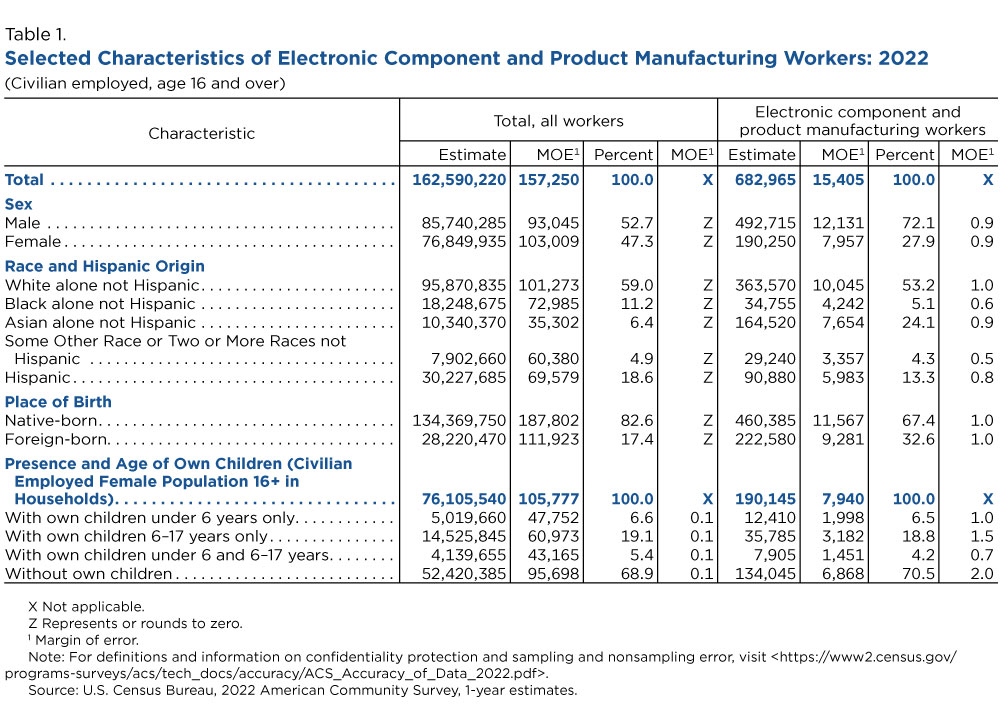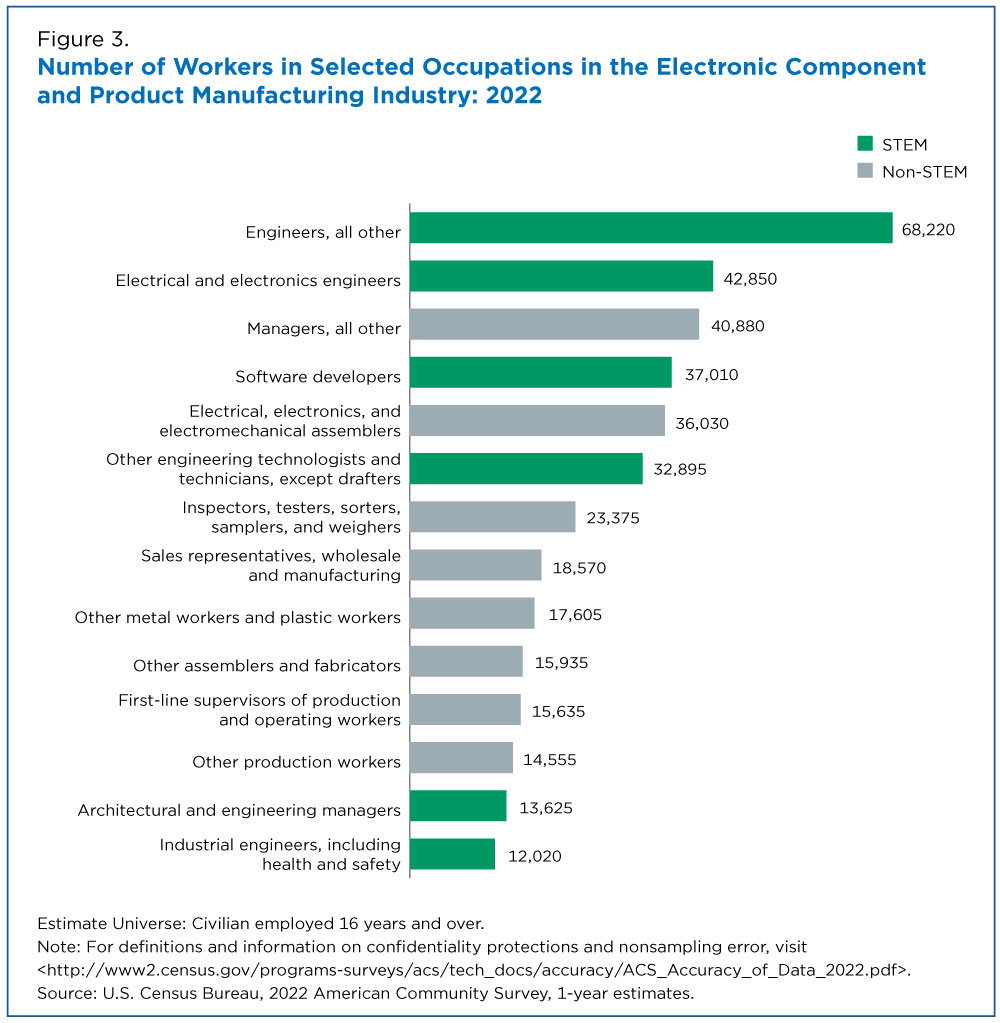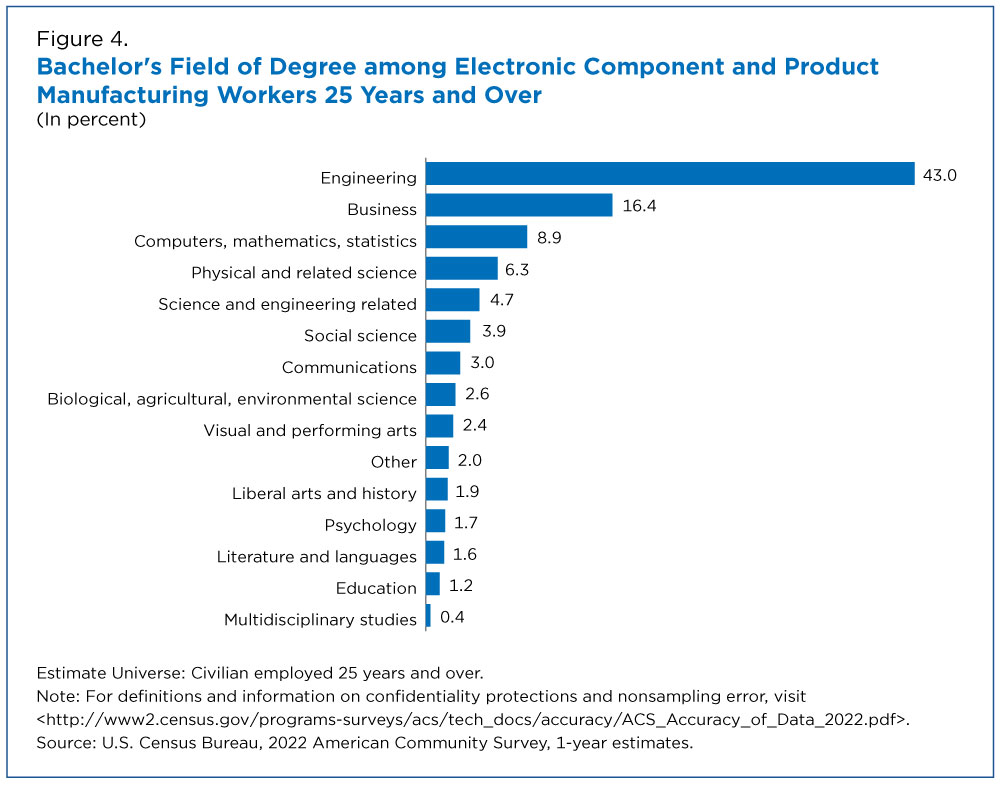Electronics Industry Facing an Aging Workforce
Semiconductors or microchips are the primary building blocks to providing computing power to electronic devices such as computers, smartphones and automobiles but economists predict that 90,000 workers need to join the semiconductor workforce by 2025 to address the deficit of chip production in the United States.
This potential shortage is happening at a time when the semiconductor-related workforce is aging.
To help recruit and support workers with children, particularly working women, semiconductor manufacturers seeking government incentives as part of the CHIPS Act are required to include a strategy for workers to access affordable, high-quality child care.
Last year, Congress passed the Creating Helpful Incentives to Produce Semiconductors (CHIPS) and Science Act, which provides funding for manufacturing, research and development to elevate the nation’s position in nanotechnology, artificial intelligence, clean energy and other transformational technologies.
We are highlighting the workers in this key part of our economy during Manufacturing Week. The semiconductor subsector includes workers and establishments that are part of the computer and electronic product manufacturing industry.
Who Are the Nation’s Semiconductor Workers?
According to the U.S. Census Bureau’s American Community Survey (ACS), in 2022 there were 16.1 million manufacturing workers age 16 and older in the United States, about 10.0% of the civilian workforce.
The ACS categorizes semiconductor workers under electronic component and product manufacturing. In 2022, there were 682,965 electronic component and product manufacturing workers or 4.2% of all manufacturing workers. The majority were non-Hispanic White (53.2%) and native born (67.4%).
Men accounted for around three-quarters of the electronic component and product manufacturing workforce (Table 1). Although women made up nearly half (47.3%) of the U.S. working population, they remained underrepresented in the manufacturing industry as well as in electronic component and product manufacturing.
One challenge for women entering and remaining in the labor force is access to child care.
The vast majority (70.5%) of women working in the electronic component and product manufacturing industry did not have children under 18 living with them. In 2022, about 19% of working women in this sector had their own children between ages 6 and 17 only, while a smaller percentage (6.5%) of working women had preschool age children (under 6) only.
To help recruit and support workers with children, particularly working women, semiconductor manufacturers seeking government incentives as part of the CHIPS Act are required to include a strategy for workers to access affordable, high-quality child care.
An Aging Workforce
The electronic component and product manufacturing workforce has an older age profile than the overall workforce (Figure 1).
In 2022, 52.1% of workers in electronic component and product manufacturing were ages 45 and over. Workers between ages 16 to 34 made up around 28% of the semiconductor related workforce compared to 35.3% of all workers.
Education
Electronic component and product manufacturing workers were more likely than the total employed population to have a bachelor’s degree or higher: 31.3% of those age 25 and older had a bachelor’s degree and 25% had a graduate degree. About 5% had less than a high school degree.
Engineers Play a Prominent Role
Six of the selected occupations with 10,000 or more electronic component and product manufacturing industry workers are classified as science, technology, engineering, and math (STEM) occupations.
About 68,000 workers were employed as miscellaneous engineers. Another 42,850 worked as electrical and electronics engineers.
The prominent role of engineers in the electronic component and product manufacturing industry is not surprising since the creation of electrical circuits or chips requires designing, building and testing highly specialized technologies — all skill sets associated with engineering-related occupations.
In 2022, about 4 out of 10 electronic component and product manufacturing workers with at least a bachelor’s degree had a degree in engineering (43%) while 16.4% majored in business.
As the demand for semiconductor chips grows, training and mobilizing workers will benefit from regional partnerships to help build facilities and public and private investments to expand training programs. These efforts are being met by community colleges and state-led construction projects.
Related Statistics
Stats for Stories
Subscribe
Our email newsletter is sent out on the day we publish a story. Get an alert directly in your inbox to read, share and blog about our newest stories.
Contact our Public Information Office for media inquiries or interviews.











